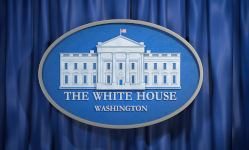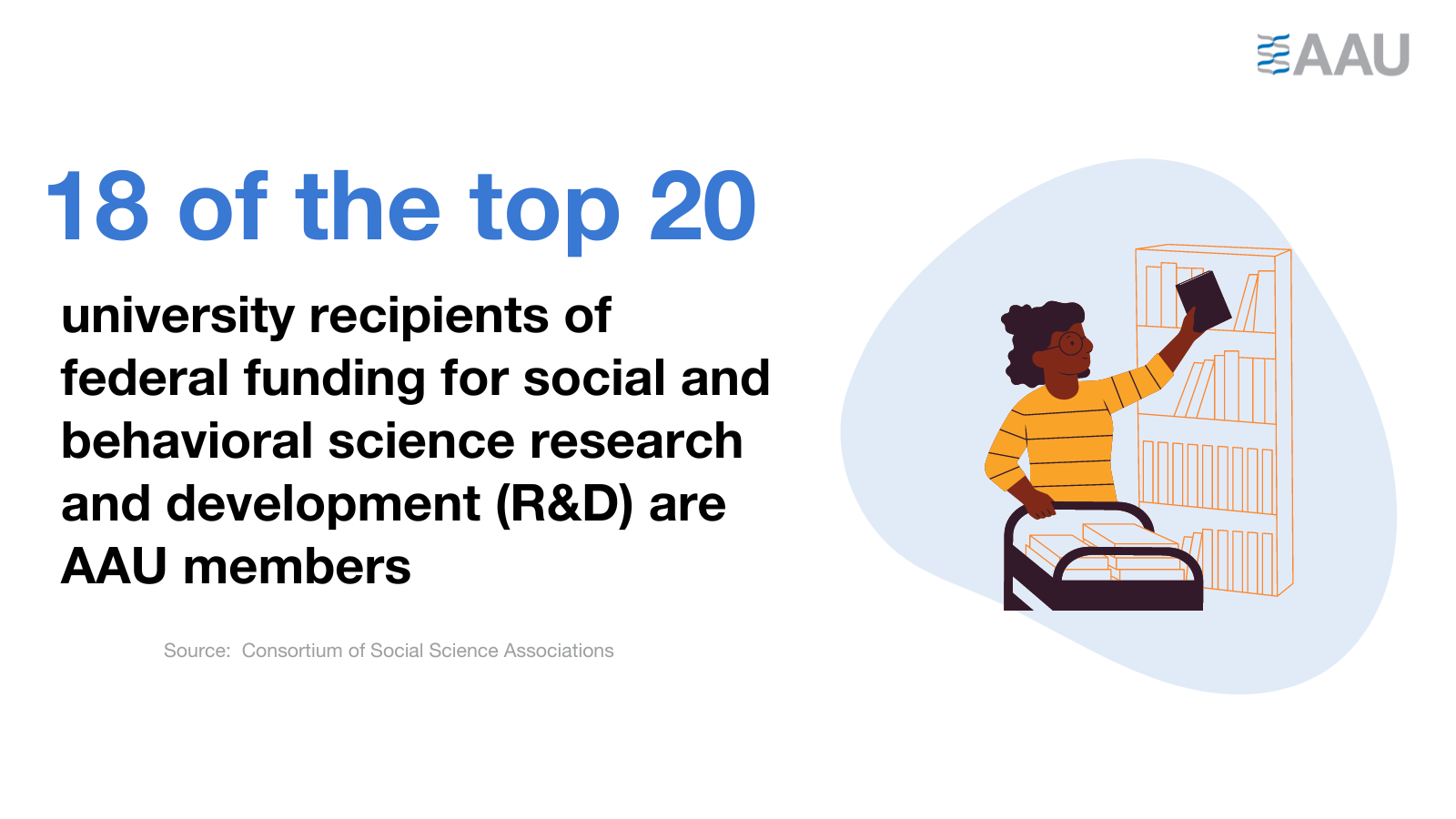 U.S. Must Invest More in STEM Talent and Basic Research, Says Report on State of U.S. Science and Engineering
U.S. Must Invest More in STEM Talent and Basic Research, Says Report on State of U.S. Science and Engineering
A new report says the United States must continue to attract and retain foreign-born STEM talent while building a robust pipeline for domestic talent in order to continue being a leader in science and engineering.
“The State of U.S. Science and Engineering” report from the National Science Board also found that, while the United States remains the world’s leader in gross domestic expenditures on research and development ($806 billion, or 3.5% of GDP, in 2021), it must ramp up federal investments in research infrastructure, basic research, and critical and emerging technologies in order to retain its competitive advantage.
According to the report, the U.S. STEM workforce included 36.8 million people in 2021, almost a quarter of the total U.S. workforce. More than half of STEM workers did not have a bachelor’s degree or higher, and “foreign-born individuals made up 19% of all STEM workers and 43% of doctorate-level scientists and engineers.”
In a policy brief, the NSB noted that the United States is not currently producing enough domestic STEM workers to meet workforce needs and increasingly relies on foreign-born workers to fill STEM jobs. The brief recommended “dramatically and quickly improving” STEM education for U.S. primary and secondary school students as well as creating pathways to college. In addition, it recommended that the United States continue to welcome international students and “implement policies that entice and enable them to work in the United States after they receive their degree.”
The NSB’s report further highlighted that, while U.S. federal funding for R&D increased from 2011 to 2021, the “share of total U.S. R&D funded by the federal government decreased from 30% in 2011 to 19% in 2021.” The decline in the federal government’s share is indicative of higher R&D investments from the private sector. Indeed, the private sector now funds 36% of basic research, just slightly below the federal government, which funds 40% of basic research.
While private investment in basic research is to be celebrated, as the NSB policy brief noted, “business and federal funding are not interchangeable.” While industry focuses its investments on basic research that has the potential to lead to near-term economic gains, the policy brief explained, “only the federal government can take the kinds of strategic risks necessary to invest long-term across STEM fields and fuel new knowledge with potentially big returns for the country.”
 FEATURED RESOURCE: Reinvigorating the Government-University Partnership That Fosters Innovation
FEATURED RESOURCE: Reinvigorating the Government-University Partnership That Fosters Innovation
 President Biden Releases FY25 Budget Proposal
President Biden Releases FY25 Budget Proposal
Last week, President Biden released his FY25 budget proposal. It requests $7.3 trillion in overall funding and includes proposed increases for many of AAU’s education and research priorities. In particular, the proposal would increase the maximum annual Pell Grant award by $750 and provide $20.1 billion in discretionary spending for activities authorized by the bipartisan CHIPS and Science Act of 2022 (including at the Department of Energy, the National Science Foundation, and the National Institute of Standards and Technology).
A White House fact sheet on the president’s budget request is available here; supporting materials released by the Office of Management and Budget, including analytical perspectives and appendices, are also available.
 AAU Members Rank High in List of Top Universities Led by Women
AAU Members Rank High in List of Top Universities Led by Women
According to Times Higher Education, six of the world’s top 10 universities led by women are AAU members. The list includes the Massachusetts Institute of Technology, led by Sally Kornbluth; the University of California, Berkeley, led by Carol Christ; Columbia University, led by Minouche Shafik; Cornell University, led by Martha Pollack; the University of Washington, led by Ana Mari Cauce; and New York University, led by Linda Mills.
The London-based publication says that a quarter of the world’s top 200 universities are now led by women. Pennsylvania State University President Neeli Bendapudi recently appeared on CBS Live to talk about the list and about challenges and opportunities for women leaders in higher education. (Penn State was listed at No. 29 on the list.) “It’s great news on the one hand to see progress, but certainly there’s hope that we can do so much better,” she said.
 AAU Participates in Annual Humanities Advocacy Day
AAU Participates in Annual Humanities Advocacy Day
Last week, AAU staff and interns participated in the annual Humanities Advocacy Day organized by the National Humanities Alliance. Every year, Humanities Advocacy Day brings together delegations from across the United States to make the case on Capitol Hill for increases in federal funding for research and education in the humanities.
AAU staff and others visited various congressional offices and advocated for increased FY25 funding for the National Endowment for the Humanities, the Department of Education’s international education programs, and other federal humanities programs. AAU staff also emphasized the importance of humanities learning and education and highlighted the vibrant humanities work happening at America’s leading research universities in partnership with the NEH.
 AAU, Associations Submit Statement for the Record Opposing NLRB’s Effort to Misclassify Student-Athletes as Employees
AAU, Associations Submit Statement for the Record Opposing NLRB’s Effort to Misclassify Student-Athletes as Employees
Last week, AAU joined the American Council on Education and four other higher education associations in submitting a statement for the record to the House Subcommittees on Health, Employment, Labor, and Pensions and Higher Education and Workforce Development for their joint hearing on “Safeguarding Student-Athletes from NLRB Misclassification.” The associations’ statement highlighted the “serious misunderstandings” fueling the National Labor Relations Board’s misguided effort to recast student-athletes as employees as well as the vastly negative implications the effort would have on colleges and student-athletes.
The statement pointed out that most college athletic programs do not generate net revenue for their institutions and that many student-athletes play without receiving any athletic scholarship money. “Nearly all of the athletic departments of the NCAA’s 1,100 member institutions have operating costs that exceed generated revenues, and the overwhelming majority of the 500,000-plus intercollegiate student-athletes participate on teams that bring in little or no revenue,” it noted.
Schools maintain teams that do not fiscally sustain themselves because they believe “that the teams provide students with valuable opportunities to develop outside the classroom – building self-confidence and self-discipline, learning unique lessons about teamwork, and generally enriching their college experience.” And students participate in these teams “because of their love of their sport and the competition that comes with it.”
If student-athletes were classified as employees, the statement argued, the “administrative costs and burdens” of paying them would be so substantial that “American intercollegiate sports as we know it would virtually collapse.” Schools in every NCAA division would be forced to eliminate their teams. Treating student-athletes as employees, the statement concluded, would be devastating for local communities, colleges, as well as “future generations of aspiring collegiate athletes who risk losing the opportunity to have an intercollegiate athletics experience.”
News of Interest
Politico: How Congress Defanged Biden’s Big Science Push – The CHIPS and Science Act of 2022 authorized almost $200 billion in funding over five years for federal science agencies, but congressional appropriations have fallen significantly short of that target. The law, for example, authorized $81 billion for the National Science Foundation over five years. Instead, this year, lawmakers cut the agency’s budget by 8%.
Nature: China Promises More Money for Science in 2024 – China will spend $52 billion “on science and technology in 2024 – a 10% increase compared with the previous year – according to a draft budget report by China’s Ministry of Finance.” The increase comes as the country aims to shift its economy from “sectors such as real estate” to “high-tech development,” and to compete with the United States in “a race for technological supremacy.”
Hartford Courant: Opinion: Connecticut Must Seize Quantum Technology Opportunity and the Job Creation It Brings – In an opinion essay, Yale University Vice Provost for Research Michael Crair and University of Connecticut Vice President for Research, Innovation, and Entrepreneurship Pamir Alpay urge Congress to fulfill the promise of the CHIPS and Science Act and increase investments in science, including quantum technology. “China’s $15.3 billion government investment in quantum dwarfs the U.S.’s $3.7 billion,” they write, continuing: “If we don’t reverse these trends, our country will falter in the race to the quantum future.”
Inside Higher Ed: Doubts About Value Are Deterring College Enrollment – A new study funded by the Bill & Melinda Gates Foundation finds that high school students and adults not enrolled in college are increasingly skeptical about the benefits of college and that this skepticism may be driving a decline in college enrollments. The report suggests that higher education needs to communicate better the value of college degrees, which are linked to improved socioeconomic outcomes for graduates.
AP: Education Department Starts Sending Financial Aid Data to Colleges After Months of Delays – The Department of Education has started sending federal financial aid data to higher education institutions after months of delay. Colleges and universities use the data to assemble financial aid offers for prospective students. The delay has led many institutions to extend their enrollment deadlines and give students and their families more time to accept an offer of admission.
Featured Research

Communities of Color Across the U.S. Suffer Growing Burden from Polluted Air
A new study published by George Washington University researchers found that communities of color, which are often “located near factories, congested roadways or shipping routes,” are “shouldering a growing burden of diseases linked to air pollution.” The study found that the communities “endure nearly eight times higher rates of pediatric asthma and 1.3 times higher risk of premature death from exposure to pollutants.”

‘News Finds Me’ Mindset May Lead Readers Away from Political, Science News
A new study published by George Washington University researchers found that communities of color, which are often “located near factories, congested roadways or shipping routes,” are “shouldering a growing burden of diseases linked to air pollution.” The study found that the communities “endure nearly eight times higher rates of pediatric asthma and 1.3 times higher risk of premature death from exposure to pollutants.”
Stat of the Week

AAU Universities Are Top Recipients of Federal Funding in Social and Behavioral Sciences
Eighteen of the top 20 university recipients of federal funding for social and behavioral science R&D in FY22 were AAU members. The three universities that received the most federal funding, according to the Consortium of Social Science Associations, were the University of Michigan, the University of North Carolina at Chapel Hill, and the University of Southern California.
The consortium describes social and behavioral sciences as encompassing “a collection of STEM disciplines engaged in the rigorous study of why and how humans behave as they do as individuals, groups and within institutions, organizations, and society.”